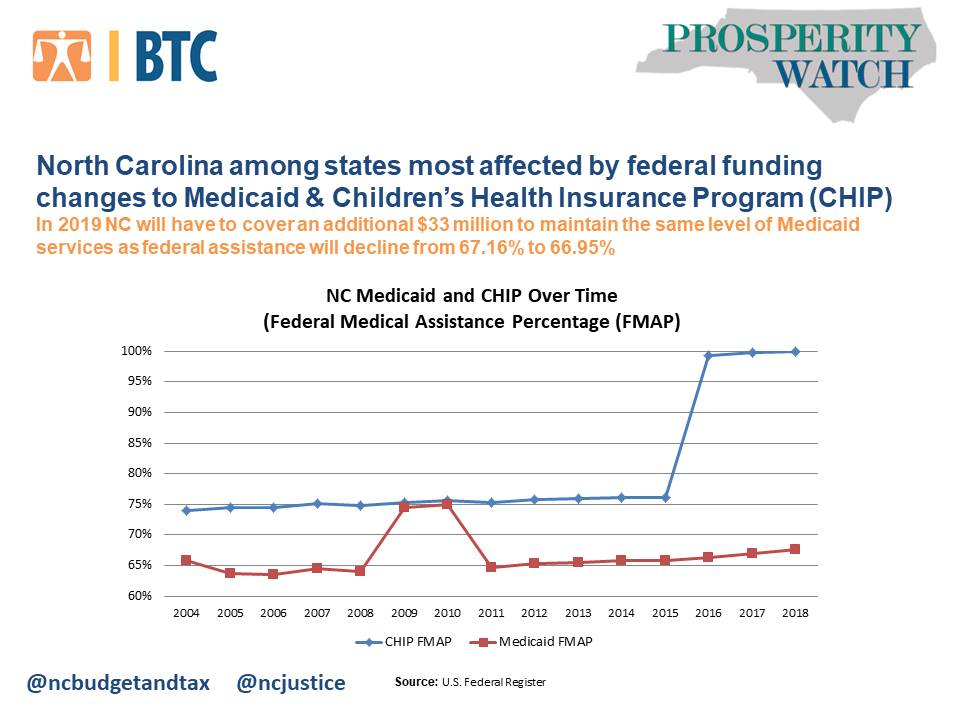Prosperity Watch, Issue 87, No. 2
(June 12, 2018)
North Carolina is currently on track to lose millions in federal assistance that helps provide Medicaid and Children’s Health Insurance Program (CHIP) services to thousands of people across the state. Loss in federal assistance has already begun in the form of gradual decreases to the Federal Medical Assistance Percentage (FMAP) that North Carolina receives, as well as through federal budget cuts.
As the 10th most populous state in the country, with over 2 million people covered by Medicaid and over 200,000 children participating in CHIP – and as a state that covers over 50 percent of these costs through federal medical assistance – it is ranked as one of the states that is most affected by federal funding changes.
For the past three years, our state has seen federal medical assistance that has remained consistent or increased slightly; however, that is set to change as North Carolina next year will have to cover an additional $33 million just to maintain the same level of Medicaid services, as it is estimated that the Medicaid FMAP for our state will decline from 67.16 percent to 66.95 percent.
Furthermore, the federal medical assistance that North Carolina receives for CHIP is set to return to its historical lower percentages beginning in 2020 (i.e., decreasing from an FMAP close to 100 percent to one that is closer to 75 percent). Moreover, Congress is on track to cut an additional $15 billion from the federal budget this summer and CHIP itself will see a cut of $7 billion. If child enrollment is higher than expected, this will lead to a loss of health coverage.
These health programs that have been funded jointly by the federal government and the states since their inception help provide health insurance coverage for low-income populations and to uninsured children in families whose incomes are too high to qualify for Medicaid. With a growing population, and advance warning of the federal-cost shift, state lawmakers must plan adequately and reassess the 10 consecutive years of declining state investments. Total state spending for the upcoming 2019 fiscal year remains below 2008 pre-recession spending levels and does not consider the upcoming federal-cost shift.
 Justice Circle
Justice Circle 
